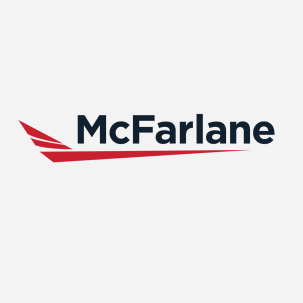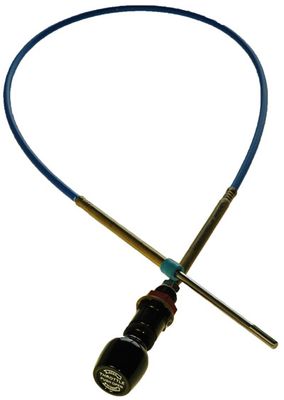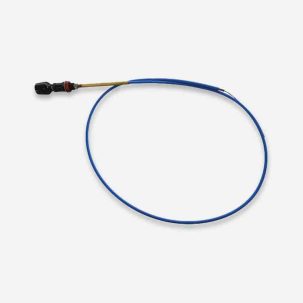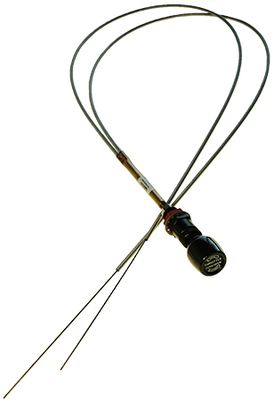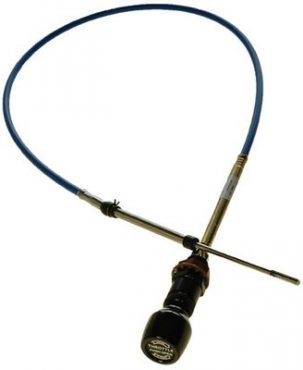MCVAC299505-0102 Cessna Throttle Control, Vernier-Assist
$594.32
Vernier-Assist Throttle Controls
THE CONTROL LIKE NO OTHER!
Vernier and Friction Lock – The Best of Both
McFarlane’s patented Vernier-Assist™ offers the pilot precision control of the engine, unlike anything else on the market! The Vernier-Assist assembly operates on friction alone by simply turning the knob, with no threads or locking balls/pins. It also allows for normal coarse movement by pushing in or out on the knob. Unlike standard threaded vernier controls, this design cannot be jammed. The friction control provides smoothness and precision when operating the throttle and a friction lock secures the control in position, but it can be easily overridden in the case of an emergency. It is SAFE!
Now FAA-PMA Approved!
Jam-proof safety
Precision power adjustments
Smooth friction control
Light and compact
Standard Vernier performance without the button
How to safely and properly use the Vernier-Assist Throttle Control
Vernier-Assist gives unparalleled control in both fine and gross inputs of your throttle. To achieve this performance, it is important to understand how to properly operate the Vernier-Assist mechanism.
As stated, the Vernier-Assist can provide traditional gross throttle inputs for engine run-up, take-off, or any other flight condition. This is achieved, like traditional controls, by releasing the friction lock, making those large changes to control position, and then locking the friction control to hold the commanded position. While the friction lock is engaged, fine adjustments can also be made by rotating the knob of the throttle clockwise to advance the control, counterclockwise to retract. This mechanism gives superior control by allowing very minor adjustments with little to no effort by the pilot. It is a great improvement over other controls with the level of refinement possible; even over those with an existing vernier function.
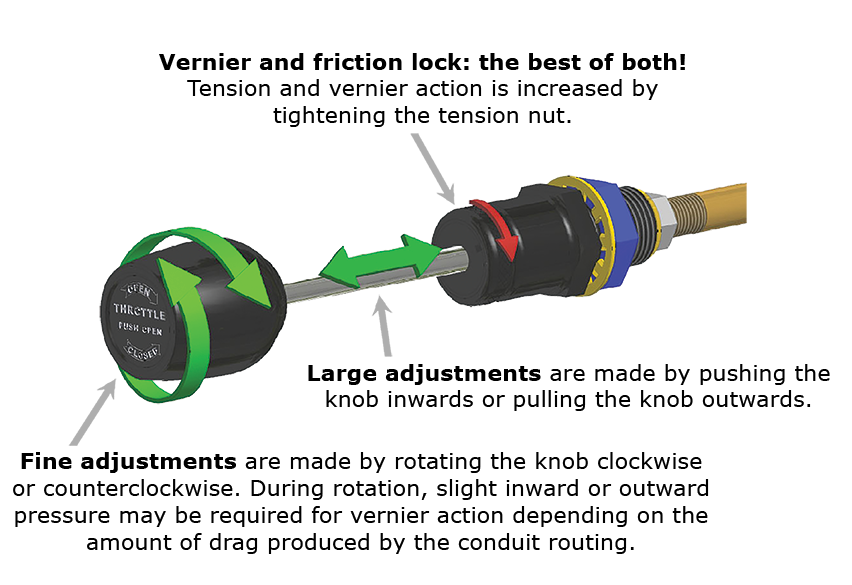
It is important to realize that the Vernier-Assist is different than all other controls. The Vernier-Assist operation is dependent on locking the friction nut. This is achieved by turning the friction lock nut clockwise until it completely stops. In this position the control is held. By design the control can still be overridden by the pilot, operating like a standard push-pull control, but will not wander on its own. It is also in this tightened position that optimum performance of Vernier-Assist is possible. If the friction nut is loose or not in the tightened position, the Vernier-Assist will not perform as well and can lead to a slippage and un-commanded movement in control position. Vernier-Assist throttle controls may need slight inward and outward pressure during rotation to assist in the vernier function of making fine adjustments.
If you need to pick up parts our store and warehouse is conveniently located at Allegheny County Airport (KAGC) in Western Pennsylvania. Fly or drive in for your parts if you are in the area!
Aircraft Supply and Repair Inc.
21 Allegheny County Airport
West Mifflin, Pennsylvania 15122
- Orders: 800.569.9397
- Customer Service & Technical Support: 412.469.1747
- Fax: 412.469.8271
- info@aircraftsupply.com
Call us if you need assistance, Parts Support is our expertise and we are happy to help. Please feel free to contact us at 1.800.569.9397, 412.469.1747 or by email, info@aircraftsupply.com We look forward to supporting your aircraft needs!

